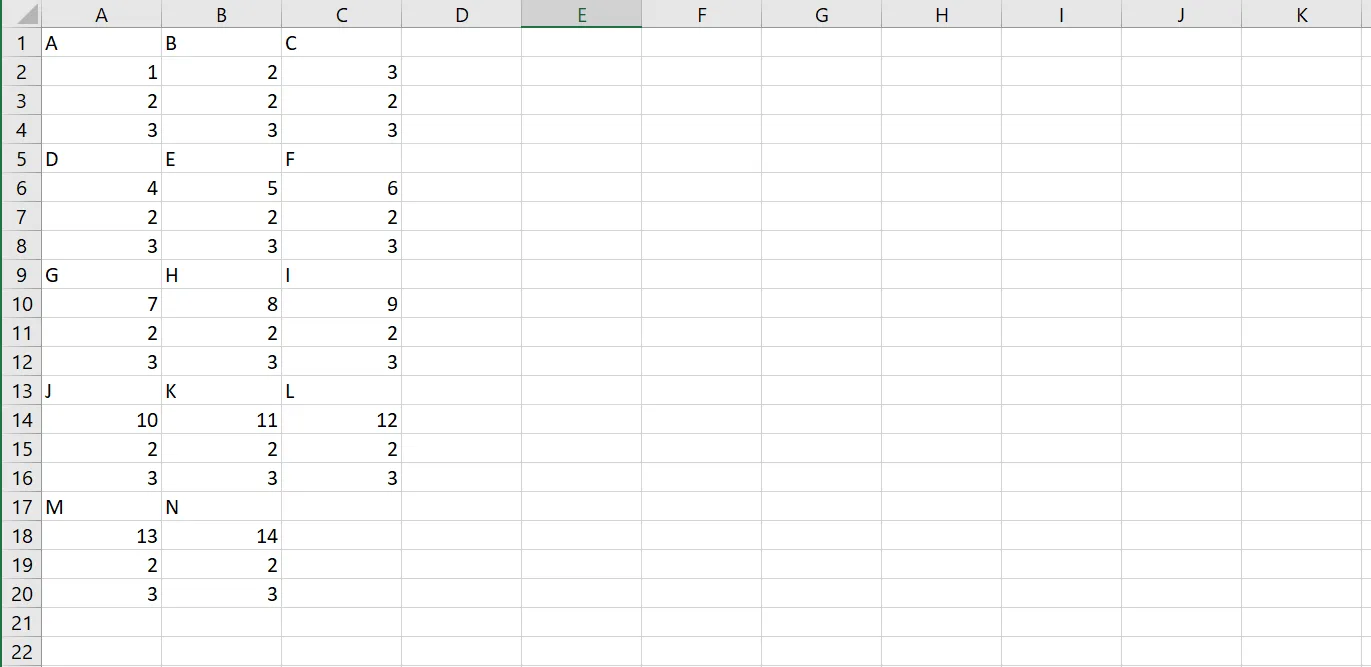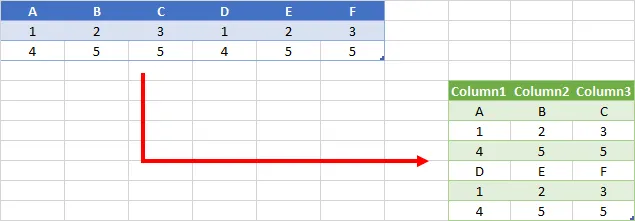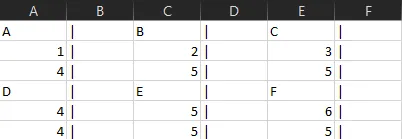我正在使用Excel处理一个抽取文件。它基本上是多个列,每个列有多行数据。
A | B | C | D | E | F |
1 | 2 | 3 | 1 | 2 | 3 |
4 | 5 | 5 | 4 | 5 | 5 |
我想将它展开成三列,就像这样:
A | B | C |
1 | 2 | 3 |
4 | 5 | 5 |
D | E | F |
1 | 2 | 3 |
4 | 5 | 5 |
我想使用VBA进行操作,但是我对这种语言非常新手,以下是我目前所做的事情:
Sub test()
Dim Key, Dic As Object, cl As Range, Data As Range, i&, n&
Set Dic = CreateObject("Scripting.Dictionary")
Dic.CompareMode = vbTextCompare
i = Cells(Rows.Count, "A").End(xlUp).Row
n = 1
Set Data = Range("B2:B" & i & "," & "D2:D" & i & "," & "F2:F" & i & "," & "H2:H" & i)
Dic.Add "|ID", "Date|Thing"
For Each cl In Data
If Cells(cl.Row, "A") <> "" Then
Dic.Add n & "|" & Cells(cl.Row, "A"), cl.Text & "|" & cl.Offset(, 1).Text
n = n + 1
End If
Next cl
n = 1
For Each Key In Dic
Cells(n, "K") = Split(Key, "|")(1)
Cells(n, "L") = Split(Dic(Key), "|")(0)
Cells(n, "M") = Split(Dic(Key), "|")(1)
n = n + 1
Next Key
End Sub
它给我这个结果:
A | A | A |
B | B | B |
C | C | C |
1 | 1 | 1 |
2 | 2 | 2 |
3 | 3 | 3 |
4 | 4 | 4 |
5 | 5 | 5 |
6 | 6 | 6 |
D | D | D |
E | E | E |
F | F | F |
1 | 1 | 1 |
2 | 2 | 2 |
3 | 3 | 3 |
4 | 4 | 4 |
5 | 5 | 5 |
6 | 6 | 6 |
能帮我一下吗?






